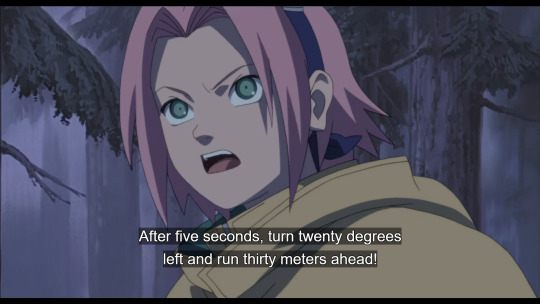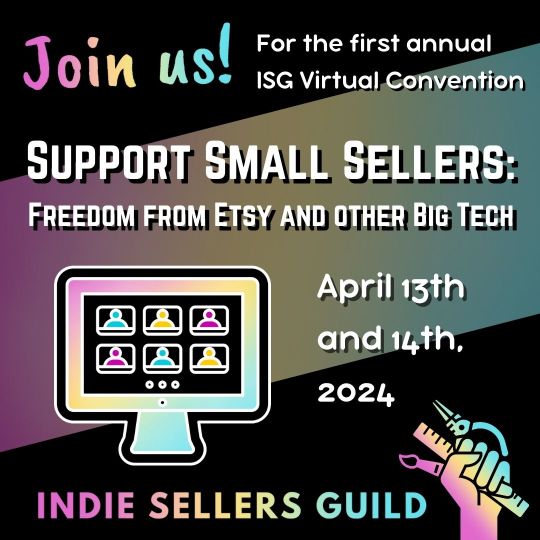#you need a budget software review
Explore tagged Tumblr posts
Text
#1 destination for finding software and services
We’re the #1 destination for finding software and services
Verified Reviews 2 million verified reviews from people like you to get the insights you need
Proprietary Insight 500+ softwarereviewforall Shortlist reports to narrow down your options and save you time
Expert Guidance Personalized software recommendations from human advisors in less than 15 minutes
Satisfied customer / FROM OUR USERS "softwarereviewforall helped us get insights from other people in our industry to make a better, more informed decision." JOSH D. Sales Engineer
Please note that "softwarereviewforall" is a placeholder, and you should replace it with the actual name or website you want to use in your text.
#software review#software reviews#antivirus software review#mint software review#you need a budget software review#jira software review#quicken software review#reaper software review#zoho software review#software testing review#xero software review#gimp software review#libre software review#topaz software review#software review sites#software review websites#software review site#nch software review#audacity software review#tax software review#video editing software review#4 vs 4s#best tax software 2023#avalanche software#what type of software controls the hardware of a computer?#hogwarts legacy review#procore#clipchamp review#shotcut review#stessa review
12 notes
·
View notes
Text
How much should it cost to be a writer?
It depends what route you’re taking. If you are planning to go for traditional publishing, which looks like you finishing a manuscript and then querying agents who will then take your book to publishers, you should be paying for basically nothing. One exception would be if you decide to hire an editor to get a pass over your manuscript and/or query package before sending it off, but this is not required.
If you are in the process of trying to get your manuscript traditionally published, you may be approached by a “publisher” offering to publish your manuscript for a fee. THIS IS A SCAM! An author should never be paying for “publishing services.” Anyone asking you to pay for your own printing, marketing, etc. costs is taking advantage of you. These are called vanity publishers and they will not turn you a profit, help you attract readers, or provide you the prestige of being published.
Always check on Writer Beware - search for the name of the person or company. You can also just google that name along with the word “scam” or “reviews.” In general, don’t let yourself be blinded by dreams, or let yourself be convinced that something is a good idea because you really want it to be true. Never, ever, ever pay a publisher.
If you are going the self-publishing route, you will be paying for certain things, but none of those should be payment to be published. You are the publisher. Uploading your manuscript to Amazon or other marketplaces is free. However, you will be paying for things that a publisher typically pays for. This could include:
-Cover art - you could do this yourself, though this isn't recommended. A good cover is key to a book's success, so budget to purchase a pre-made book cover, or hire a professional cover artist.
To find pre-made book covers, you can just Google "premade book covers," or check one of these sites: BookCoverZone RockingBookCovers Beetiful
And here's a list of places to buy both custom and pre-made cover designs that's a good start. You can also check Reedsy and Etsy for people listing cover design services. If there is a self-pubbed author whose covers you love, try asking them what artist they use.
-Formatting - you could do this yourself using a formatting program like Atticus, or you could hire someone who does professional e-book formatting.
Here's an article on the turbo-DIY route. Here's a list of formatting programs you can use. To hire someone, you can simply search for book formatting services or look at places where people list such services for hire, like Reedsy, Fiverr, or certain Reddit boards.
-Ad campaigns - you may want to pay for ad campaigns on platforms like Meta or Amazon. More niche, author-specific platforms like BookBub, Book Funnel, or Book Sirens also come with certain costs.
-Author services - you may wish to hire an expert in things like marketing, blurb copy, social media metrics, newsletter management, etc. You can find information on that here.
Be aware that scam publishers might try to pitch themselves as "author services" - you should be paying someone to help you with specific aspects of your self publishing work, NOT paying to be published.
-Software and platforms - whether it's a subscription to Duotrope, a paid Scribophile account, access to pro Canva features, etc. you may decide to pay for tools that you will use to do your work well.
-Expert advice - some people offer courses, books, or other resources on how to do specific things like write a compelling blurb or run an effective ad campaign. You may notice that a lot of the links I shared here will include upsells from people doing exactly this!
Be very cautious about this, as most of these people claim that they make tons of money on their self published books, but really, they make their money selling this stuff to people like you. Always check out a person’s free resources first, and wait to invest in this sort of thing until you have a specific question you need answered or are trying to do a very particular thing that you need granular guidance on.
One thing you should NOT pay for is a review, feature, or interview. Self-published authors will be approached by a lot of scammers who claim that, for a nominal fee, they will share information about your book to their huge audiences. These are completely useless and a waste of money. Never spend money on this.
Always keep track of what you are spending on all of this. You may be able to deduct it from taxes you pay on your income from writing, and you will want to really understand what your profit margins look like.
61 notes
·
View notes
Text
sotf surveys - Naruto: Ninja Clash in the Land of Snow
Yo, welcome to a series about my reactions to the Naruto movies and OVAs. Today we will be reviewing Naruto: Ninja Clash in the Land of Snow (legit thought about doing this right after I finished the movie while having dinner lol)
I had previously watched Naruto Movie 1 when I was younger so this was more of a refresher to me. I remember a few major details but the rest were cloudy so I had a few surprises which was exciting, this is the benefit of rewatching something you've seen ages ago and become encapsulated with it all over again. Let's get into it:

OH MAN, you can definitely tell this was movie quality animation. I did not notice how well it was animated when I was younger, they really used up the budget well. Animated shows like to cut corners when it comes to animating to save both time and money which can make the animation feel stale. BUT THIS OUGH, you can see the overshoots and the anticipation in the characters' movements which adds more to their personality, specifically Naruto and Sakura who are outwardly expressive.
SPEAKING OF EXPRESSIONS

FINALLY I KNOW THE CONTEXT OF THIS IMAGE, I've seen it around before but wasn't sure where it was from.
An example of animation that display's Sakura's personality is in a scene 11 minutes into the movie where Team 7 (minus Naruto) gets a debrief on their mission with the film team.

Just for those 7 seconds we see how interested and excited Sakura is being in a movie studio. If it were set on the show I feel like she would only look over her shoulder and that would be it. In movie form we get a bit extra, not just looking over her should but she's innocently rocking back and forth. In addition, we have some background characters moving around which makes the space feel alive.
Another thing to note is the fluid motion of a character or scene being carried over from one frame to the next also the physical weight of their actions.

My favorite example of this is Yukie getting drunk in a small bar, you can see in both her and the other patron are clearly drunk and it's not because of the sake present. Yukie would slosh around, jerk forward suddenly, and have a heavy hand. When Sandayuu and Sakura burst in you can see the weight of their movements as well.
I'm also a sucker for sound quality and the use of foley sounds in movies ever since I learned about it in school. The sounds in Naruto Movie 1 are DELICIOUS. I'm fortunate to have access to a surround sound software also the website I'm using to watch the movie still contains the original sound file so, audibly, it feels like I am in a physical movie theater.
Interestingly, noticed a few scenes used dolly zoom. Not much to comment about it, very neutral about it.
Ma ma, enough with the technicalities, let's get into the plot-
"I guess it can't be helped." KAKASHI!?!? STRAIGHT UP WHIPS OUT THE SHARINGAN JUST TO PUT YUKIE UNDER A GENJUTSU. LIKE I GET IT, GOTTA MOVE HER ALONG NO SENSE IN BICKERING, BUT LMAO
Baby Koyuki and her father :(( the whole dream/flashback was adorable, even if it was short-lived.
Time to be a little Kakashi-biased, mainly the voice acting teehee. I'd like to note that I'm watching this in sub so Kazuhiko Inoue I am all ears. This is the scene where the filming gets interrupted by the villains, Kakashi springs into action, with a quick and commanding voice directs Team 7 to protect the now revealed princess, Koyuki.

If only y'all can hear this gif
Not the villains boasting about their literal plot armor to our protagonists.
Good job Sakura on doing what you're suppose to be doing! Protecting Koyuki-sama. Naruto ran straight towards one of the antagonists, though to be fair Sasuke was defending himself against the female antagonist. For theatrics sake makes sense, you gotta have a fight scene yknow.
I need to remember the movies aren't canon- Kakashi copying Ice-Style? Not possible since it's known as a kekki genkai, though for the sake of the plot and theatrics Kakashi's allowed to use Ice-Style lol.
ANBU KAKASHI SPOTTED IN FLASHBACK
"I, Sandayuu, will protect you with my life!" My pattern recognition senses are tingling...
Gonna dip back into some technicals again for a moment:
One of my favorite tropes in shows and movies is the involvement of the behind the scenes team present on stage, regardless if it's the camera crew, the animation crew, the production crew, etc. It's a funny gag, letting the audience know how hard these people work to produce their shows and movies. In Naruto: Ninja Clash in the Land of Snow is no different where they show the type of work they put in setting up the scene with backdrops and props, ensuring the actors are in costume and make-up, and the final touch is the lights, mic, and camera are a go before calling action. The movie takes it a step further and shows us how far the director is willing to go to produce the final chapter of their movie series, it's also a chance of a lifetime.
I WAS RIGHT- BUT HOLY FUCK WAS THAT OVERKILL. RIP Sandayuu
I love the initial exchange in dialogue between Koyuki and Naruto during the prison scene,
"Well deserved." "You too."
MORE BABY KOYUKI AND HER DAD FLASHBACK
"Everyone seems to forget, I'm an actress." Ngl, thought Koyuki was under a genjutsu at first, then she double played me by stabbing Dotou. She really is an actress, go off girl
Sakura and Sasuke showing off their clever battle tactics??? A really impressive scene with their skills as shinobi; using their environment to their advantage, great use of ninja tools, great use of taijutsu too, and lastly they figured out how to destroy the chakra armor.

"Even if ninjutsu and genjutsu don't work on you, a shinobi still has taijutsu." The essential Shinobi Battle Skills!!!
A common trend with the first movie and the following Naruto movies, the main villain is always defeated with a rasengan variant, with Naruto: Ninja Clash in the Land of Snow it's a 7 color chakra rasengan, or "rainbow rasengan". I find the variants really cool, though the trend to be silly /pos
baby Koyuki and her father memory? NO, baby Koyuki and her father projection!!! Legit thought she was having another flashback.
MY MAN KAKASHI JUST FOUND OUT ICHA ICHA PARADISE IS GETTING A MOVIE ADAPTION AND KOYUKI IS STARRING IN IT



Like any marvel movie, if you stick around until the very end the animation crew shows their gratitude towards the audience by thanking them which I really like especially since this is the first Naruto movie so they worked really hard on this and I appreciate their efforts.
#naruto: ninja clash in the land of snow#naruto movie#naruto anime#team 7#naruto#naruto uzumaki#uzumaki naruto#sasuke#sasuke uchiha#uchiha sasuke#sakura#sakura haruno#haruno sakura#kakashi#kakashi hatake#hatake kakashi#koyuki kazahana#yukie fujikaze#sandayuu asama#icha icha tactics#sotf surveys
22 notes
·
View notes
Text
Comprehensive List of Tips for Self-Publishing Authors

Cover Design
"Never judge a book by its cover" is a philosophy very rarely followed by most readers, so it's important to make sure your cover is as eye-catching, aesthetically pleasing, and true to your story as possible. The cover should encompass what your story is about and it should give the reader a glimpse into the world you've spent years creating.
For most of us who are not artistically inclined, trying to create a cover design on our own is incredibly challenging. When you find yourself unable to generate an exemplary product, you may need to turn to a freelance designer or a company that specializes in poster/book cover graphics. Here are some options for you to explore:
Fiverr - budget-friendly, ample reviews from previous customers, and examples of work are provided by the designer, but make sure to be aware of AI use so your product is made authentically.
BespokeBookCovers - this company asks that you give a short synopsis of your book, along with some basic details, then you will be contacted to discuss more about what you are looking for. They do require a 50% deposit prior to beginning the design, but you do receive the product within 12 business days. They also ensure you are completely satisfied with the product before the transaction is complete. This company may not be the best for fantasy authors as most of their covers have more of a Colleen Hoover-esque aesthetic.
Miblart - This is a wonderful cover design company for fantasy writers, as evident in the examples provided on their website's home page. They do not require prepayment and offer payment installations in case the total cost at once puts a financial strain on you.
Editing and Formatting
Similarly to traditional publishing, you need to thoroughly self-edit your work before submitting it for professional editing. Suppose you feel as though you are proficient enough in editing that you do not require professional services or you cannot accommodate the cost. In that case, I suggest using workbooks or software to make sure your grammar and syntax are as high quality as possible. Here is a list of editing tools that can help you review your work:
Grammarly - a good resource for spelling, but it often flags intentional word-choice and sentence structure to make it more simple, which may be incompatible with your writing style. Also be aware of incorrect suggestions.
The Copyeditors Handbook - offers a guide to book publishing and addresses common writing errors. Does come with a workbook to help you exercise your skills.
It's also important that you understand the risks of self-editing. Sometimes it's hard to see flaws in your own story/writing because you already know all of the details. The reader does not have this knowledge, so certain plot points, wording, or details may be lost on them. Having a second set of eyes is incredibly beneficial to help you solve this problem. Here are some outside editing tools:
UpWork - allows you to list a job and review applicants. Each applicant is verified to be real, and you can sample some of their work and their credentials by viewing their profile.
Reedsy - employs Big Five editors to find a proper match for your writing
Raab & Co. - a self-publishing company that helps match you to a professional editor
ISBN
An ISBN number can help readers identify and find your book across multiple platforms, given that an ISBN is a unique number. You can buy an ISBN through Bowker or ISBN.org. An ISBN number on this website costs about $150 USD. This is not a necessary step, so no worries if you don't get one. It simply helps your book be more recognizable and appear more professional.
Pricing
The best way to figure out how to price your book is to look at similar publications on the platform you intend to publish on. Amazon is the most common, so look at your options. Generally, you can publish the book for a fixed price, or you can use Kindle Unlimited. Here's a list of pros and cons for Kindle Unlimited:
Pros:
Paid per page read, which is amazing for longer works or series
Saves a lot of time and effort as most of the work is done by Amazon, and it can generate more income than other platforms
Gain popularity because each time someone checks out your book or adds it to their library, it counts as a sale in your sales rank, which can boost your profile
Cons:
Unable to publish more than 10% of your book on any other platform while it is available on Kindle Unlimited, which limits your ability to reach a greater audience
Sometimes the length of the book affects income more so than the quality of the writing itself, so your book may be incredible well-written but have a lower sales rank.
#book blog#authors#bookish#books#bibliophile#bookworm#books & libraries#book review#booklr#self publishing#self publication#author#independent publishing#writing tips#writing resources#basics of self publishing#creative writing#writing#writeblr#writers on tumblr#writers and poets#writerscommunity
51 notes
·
View notes
Note
Laptop!
Question!
If my requirements are fairly pedestrian - I'm probably not going to be doing anything much heavier than 1080p youtube - but I care a lot about battery life and a decently sized screen (15" or 16," and bright) where do you suggest I go looking?
I have a gut feeling that I should probabl- (the letter is roughly torn here, possibly to prevent the asker from biasing the answer)
Honestly I'd start by looking at lists of laptops with the longest battery life. Someone asked me about this last year because they needed a long battery life for field work and I ended up finding an acer or something with like a 19 hour charge, and i think that came from a list of Cnet reviews.
A quick survey suggests that a lot of it is going to come down to budget; if you want to spend a whole lot of money and battery life is your top concern you're probably looking at a 16" macbook.
If you're looking at the lowest budget possible and battery life is your top concern, you're looking for a chromebook.
If you're looking to buy something in between expensive and cheap and you dislike Apple and Chromebooks then perhaps you are looking at a 2-in-1 (the HP 360 has 15.6" screens available and 12-14 hours depending on the model).
If I wanted to look for a laptop that was a real computer (meaning I could upgrade in the future and install whatever software I wanted on it) I'd probably be looking at the Dell Latitude or an HP Elitebook, both of which have models with battery life in the 14-15 hour range (which drops significantly if it's doing full video playback, but that's also true of any computer's measured battery life).
69 notes
·
View notes
Text
Why SEO Remains the Best Marketing Strategy for Businesses in New York in 2025

In 2025, the digital landscape continues to evolve, and with it, the marketing strategies that businesses rely on to connect with customers. While many marketing tactics come and go, Search Engine Optimization (SEO) has proven to be a long-term strategy that provides sustainable results, especially for businesses in New York. The competition in this bustling, ever-growing city is fierce, and companies must ensure they’re easily found by potential customers online. Here's why SEO remains the best marketing strategy for businesses in New York in 2025.
1. Increased Search Engine Dependency
As of 2025, over 93% of online experiences begin with a search engine (Source: HubSpot). This underscores the importance of being visible on search engine results pages (SERPs). With New York’s highly competitive market, businesses that don’t appear on the first page of search results are effectively invisible to the majority of their target audience. SEO optimizes your website to ensure your business is ranked favorably on search engines like Google, helping you gain a competitive edge.
2. Cost-Effectiveness
SEO continues to outperform paid advertising in terms of return on investment (ROI). While paid ads might give you a short-term boost, organic search (i.e., the results you get from SEO) remains one of the most cost-effective forms of online marketing. According to Statista, 70-80% of users ignore paid ads in favor of organic results. For New York businesses, the financial benefit of organic SEO is significant, especially for small to medium-sized enterprises (SMEs) that might have limited advertising budgets.
3. Enhanced User Experience (UX)
Google’s algorithm updates have increasingly focused on rewarding websites that offer a positive user experience. This includes fast load times, mobile optimization, and easy navigation. SEO isn’t just about keywords; it's also about creating a website that delivers value to your users. Businesses in New York need to invest in SEO to improve their websites’ performance, ensuring customers stay on their pages longer, which in turn boosts rankings.
A seamless UX also helps to convert visitors into paying customers. Studies show that 53% of mobile users will abandon a website if it takes longer than three seconds to load. This means optimizing your website for speed and usability through SEO is crucial.
4. Local SEO and Hyperlocal Targeting
In 2025, local search has become more important than ever, especially for businesses in large cities like New York. People increasingly rely on their mobile devices to search for businesses “near me.” For example, a search for “best pizza near me” on Google returns highly relevant local results.
SEO plays a pivotal role in local SEO, ensuring that your business appears in local search results when potential customers are actively looking for products or services in your vicinity. Optimizing for local search with strategies like Google My Business (GMB) optimization, local citations, and geo-targeted keywords allows your business to capture a significant share of the local market.
In fact, 46% of all Google searches are seeking local information, and 78% of mobile local searches lead to an offline purchase (Source: Google). This means SEO is crucial for connecting with potential customers who are ready to buy in your local area.
5. Brand Credibility and Trust
In 2025, customers are increasingly skeptical of paid ads. The rise of ad-blocking software and general distrust in online advertising has led consumers to value organic search results more than ever. When your business ranks high on SERPs, customers perceive it as a more credible and trustworthy source.
SEO allows businesses in New York to establish a strong digital presence by improving website content, gaining backlinks from reputable websites, and generating high-quality reviews. This increases the likelihood that potential customers will engage with your brand and eventually make a purchase.
6. Long-Term Results
Unlike paid ads, where you must constantly spend to stay visible, SEO can provide long-term results. When you invest in a comprehensive SEO strategy, the effects are cumulative. High-quality content, backlinks, and on-page optimization continue to pay dividends long after the initial effort. This makes SEO an ideal long-term marketing strategy for businesses in New York looking to build a lasting digital presence.
7. SEO and Mobile Optimization
With mobile traffic accounting for over 55% of all global internet traffic (Source: Statista), ensuring that your website is mobile-friendly is essential in 2025. Google’s mobile-first indexing means that the search engine prioritizes mobile-optimized websites when ranking pages. This means New York businesses must prioritize mobile optimization as part of their overall SEO strategy.
SEO helps improve your website’s responsiveness, page load speeds, and mobile usability, leading to better rankings and more conversions from mobile users.
Why SEO is the Best Strategy for New York Businesses in 2025
As businesses in New York continue to compete for consumer attention, SEO remains a critical marketing strategy for success. From improving visibility on search engines to building trust with local customers, SEO provides a comprehensive solution to grow your business.
Whether you’re looking to capture more organic traffic, improve the user experience, or ensure you appear in local search results, SEO offers measurable and sustainable results that other marketing strategies cannot match. With the growing dependency on search engines and the increasing importance of local search, businesses in New York that prioritize SEO will continue to outperform their competitors in 2025 and beyond.
2 notes
·
View notes
Text
Buying a Premium Refurbished MacBook Pro in Bangalore with Insurance!

If you’ve been considering upgrading to a MacBook Pro but are hesitant due to the hefty price tag of a brand-new device, refurbished options might just be the ideal solution. For those in Bangalore, the market for refurbished electronics, including MacBooks, is steadily growing, offering a blend of affordability and quality.
Why Consider a Refurbished MacBook Pro? Refurbished MacBook Pros are pre-owned devices that undergo a rigorous testing and repair process to ensure they meet performance standards. They’re perfect for professionals, students, or anyone seeking high-performance laptops without breaking the bank. Whether you need it for video editing, graphic design, coding, or general productivity, a refurbished MacBook Pro can handle it all with ease.
One of the main advantages is cost savings. Buying refurbished allows you to access premium Apple hardware at a significantly reduced price. Additionally, many sellers in Bangalore now offer warranties and after-sales support, giving buyers peace of mind.
Where to Find Quality Refurbished MacBooks in Bangalore Bangalore is a tech-savvy city, making it a hotspot for reliable refurbished electronics. You’ll find numerous local stores and online platforms specializing in certified pre-owned gadgets. When selecting a seller, always ensure they provide:
Certification: Look for certified refurbished devices that guarantee quality and reliability.
Warranty: A minimum 6-month warranty is essential for a worry-free purchase.
Customer Reviews: Check online reviews or ask for references to ensure the seller is reputable.
Return Policy: A flexible return policy is crucial in case the product doesn’t meet your expectations.
Some platforms even offer benefits like easy EMI options, product insurance, and doorstep delivery, making the buying process seamless and convenient.
What to Check Before Purchasing When buying a refurbished MacBook Pro, keep the following in mind:
Condition of the Device: Inspect for physical damages and test its performance.
Battery Health: Ensure the battery still holds a good charge.
Specifications: Confirm the model, storage, RAM, and other features align with your needs.
Software Updates: Check if the device supports the latest macOS updates.
The Growing Trend of Sustainability Opting for a refurbished MacBook Pro isn’t just a smart financial decision, it’s also an environmentally friendly choice. By purchasing refurbished electronics, you’re contributing to the reduction of e-waste, a growing concern in urban hubs like Bangalore.
Final Thoughts Buying a refurbished MacBook Pro in Bangalore is an excellent way to get a high-quality device at an affordable price. With trusted sellers and the availability of warranties, you can make a purchase with confidence. Whether you’re a student, professional, or tech enthusiast, a refurbished MacBook Pro can offer the performance and style you need without the premium price tag.
If you’re exploring your options, take your time to research and compare. A trusted seller can make all the difference in your experience. Invest smartly and enjoy the power of a MacBook Pro without compromising on quality or budget. For more information do visit: https://www.shofus.com/
2 notes
·
View notes
Text
Explaindio Review: Easily Solve Your Video Creation Problems

Introduction to Explaindio Review
Explaindio is No #1 video editing software. It’s an easy tool to create professional videos fast and affordably. It’s great for businesses, marketers, and content creators. It gives you ready-to-use video templates, animated backgrounds, and doodle images. No editing skills needed. The simple interface makes it easy to use. Plus, there’s a 14-day money-back guarantee. Explaindio is a cost-effective way to improve your videos and creative projects.
Explaindio Review – Explaindio Overview
Product : Explaindio
Creator : Andrew Darius
Official Website : Click Here
Front-End Price : $37
Recommendation: Highly Recommend!
Niche: Video Creation Software
Get Access Now
Founder Of Explaindio – Explaindio Review

Explaindio was created by Andrew Darius, the founder of Explaindio LLC. He made the software to help people create professional videos easily, without needing advanced editing skills.
Who should use Explaindio?
Business Owners
Marketers
Content Creators.
Educators
Freelancers
Anyone new to video creation
Here are Videos From Just A Few Sample Scenes
Get Access Now
How To Use Explaindio Choose a Template: Select from various pre-designed templates for different purposes (explainer videos, marketing, social media).
Customize: Add your own text, images, logos, and videos. Use animated backgrounds and doodle images to enhance your video.
Edit: Adjust timing, animations, and transitions using an easy drag-and-drop interface.
Preview: Watch the video in real-time to make sure everything looks perfect.
Export: Save the video in your preferred format to share on social media, websites, or ads.
Inside You'll Find:

100 or 300 professional backgrounds to make your videos stand out.
100 or 300 scene templates designed to improve your videos.
500 or 1,500 doodle images perfect for creative doodle videos.
Real-world value: $10 per animated scene and $2 per doodle image.
Explaindio Features
Here’s a breakdown of Explaindio’s features with more details:
Ready-Made Templates: Choose from 100+ scene templates designed for various video types (explainer, promo, social media, etc.).
Customizable Content: Add your own text, images, logos, and video clips to personalize your video.
Animated Backgrounds: Access 100+ animated backgrounds to make your videos more dynamic and engaging.
Doodle Images: Includes 500+ doodle images for creating creative, whiteboard-style videos.
Easy Editor: Use the drag-and-drop editor to adjust text, animations, and timing with ease.
HD Video Export: Export your video in high-definition (HD) for a professional and polished look.
Simple Interface: Designed to be user-friendly, so even beginners can easily create videos.
Money-Back Guarantee: 14-day money-back guarantee — try it risk-free and get a refund if you’re not satisfied.
Affordable: A cost-effective solution for creating high-quality videos without expensive tools or software.
Explaindio is ideal for anyone who wants to make professional videos quickly, with hundreds of templates, backgrounds, and doodle images to get started right away!
Explaindio Pricing
Get exclusive access to more scene templates, doodle images, and background videos.
Special pricing is only for new, invited members.

Explaindio Gold Pack
Price: $37
Includes:
100 more scene templates
100 more HD videos
500 more doodle images
Explaindio Platinum Pack
Price: $57
Includes:
300 more scene templates
300 more HD videos
1,500 doodle images
Get Access Now
Does it really works
Yes, Explaindio really works for users. Here are the benefits:
Easy to Use:
Even beginners can create professional videos easily. No editing skills are needed.
Benefit: Saves time and effort, allowing you to create videos quickly.
Affordable:
It costs less than hiring a video editor or buying expensive software.
Benefit: Great for small businesses or anyone on a budget.
Improves Engagement:
Users have seen better engagement on social media and websites after using Explaindio videos.
Benefit: More views, clicks, and shares lead to better marketing results.
Customizable:
You can add your own logos, images, and text to make videos fit your brand.
Benefit: Creates a more personalized, professional look.
Risk-Free Trial:
There’s a 14-day money-back guarantee.
Benefit: You can try it with no risk, and get your money back if it’s not right for you.
So yes, Explaindio works well for users, giving them an easy, affordable, and effective way to make great videos.
What are the powerful resources of Explaindio
Here are the powerful resources of Explaindio with numbers:
Over 100 Ready-Made Templates:
Includes templates for explainer, promo, social media, and more.
Benefit: Create videos quickly without starting from scratch.
Over 500 Animated Backgrounds:
A large collection of animated backgrounds for different video styles.
Benefit: Add engaging visuals without needing special effects skills.
Over 1,500 Doodle Images:
A huge library of doodle sketch images for whiteboard-style videos.
Benefit: Create fun, creative content for your audience.
Easy Drag-and-Drop Editor:
A simple editor to customize text, images, animations, and video timing.
Benefit: Even beginners can create professional-looking videos.
High-Quality HD Export:
Export your videos in HD quality.
Benefit: Get professional videos ready for any platform.
Access to Thousands of Assets:
Includes scenes, animations, images, and more.
Benefit: Enhance your videos without needing extra resources.
14-Day Money-Back Guarantee:
Try Explaindio risk-free for 14 days.
Benefit: Get a full refund if it’s not the right fit for you.
How Explaindio will help me?
Save Time:
You can make videos quickly without learning complicated software.
How it helps: More time for other important tasks.
Save Money:
It’s cheaper than hiring an editor or buying expensive software.
How it helps: Affordable way to create professional videos.
Grow Your Business:
High-quality videos can help you get more views and sales.
How it helps: Helps promote your business or brand.
Be Creative:
You can personalize videos to match your style.
How it helps: Make videos that stand out and show your creativity.
No Experience Needed:
The tool is easy to use, even if you’ve never edited a video before.
How it helps: Create great videos without any skills.
Scale Your Work:
As your needs grow, Explaindio can help you make more advanced videos.
How it helps: Works for simple and big projects.
Risk-Free:
Try it for 14 days and get your money back if you’re not happy.
How it helps: No risk to try.
In short, Explaindio can make video creation easy, affordable, and fun, helping you grow your business or brand.
Is Explaindio a scam?
No, Explaindio is not a scam. It’s a real product that helps users make videos easily. It comes with a 14-day money-back guarantee, so you can try it risk-free.
Many people have had success using it to grow their businesses. The product is made by Explaindio LLC, a legitimate company. If you're not happy, you can get a refund. It’s trusted by many users.
FAQ questions
What is Explaindio?A tool to create professional videos easily with templates and animations.
Do I need experience to use it? No, it’s easy to use, even for beginners.
How much does it cost? Prices start at $37, with a premium plan for $57.
Is there a money-back guarantee? Yes, a 14-day money-back guarantee.
Can I customize the templates? Yes, you can add your own text, images, and videos.
What types of videos can I make? Explainer, promo, and social media videos.
Is it good for businesses? Yes, it’s great for businesses and marketers.
Can I export in HD? Yes, videos can be exported in HD.
What if I don’t like it? You can get a full refund within 14 days.
Is customer support available? Yes, there’s customer support to help you.
Is There Any Guarantee Of Refund?
Yes, Explaindio offers a 14-day money-back guarantee. If you're not satisfied with the product, you can request a full refund within 14 days of purchase, no questions asked.

Explaindio My Recommendation
I recommend Explaindio if you want an easy and affordable way to make professional videos. It’s simple to use and offers many templates. You don’t need any special skills to create great videos.
Plus, there’s a 14-day money-back guarantee, so you can try it risk-free. If you want to improve your video content, this tool can save you time and money. It’s a good choice for most users.
Get Access Now
2 notes
·
View notes
Text
Consultation Audit Services in Delhi: A Pathway to Financial Precision

Delhi, the capital city of India, is not just the heart of the nation but also a bustling hub of business activity. From startups to established enterprises, organizations in the Delhi area are increasingly relying on consultation audit services to ensure financial transparency, regulatory compliance, and optimized operations. Here’s an in-depth look at why consultation audit services are essential and how they can benefit businesses in the region.
Understanding Consultation Audit Services
Consultation audit services go beyond traditional financial audits. They encompass a comprehensive review of a company’s financial records, operational processes, and compliance frameworks to provide actionable insights for improvement. These services can include:
Statutory Audits – Ensuring compliance with legal and financial reporting requirements.
Internal Audits – Evaluating operational efficiency and risk management practices.
Tax Audits – Verifying compliance with taxation laws and optimizing tax strategies.
Process Audits – Reviewing and enhancing workflows for better productivity and cost-efficiency.
Management Audits – Assessing the effectiveness of leadership and decision-making processes.
Why Businesses in Delhi Need Consultation Audit Services
Regulatory Environment Delhi is home to numerous businesses operating under stringent local, national, and international regulations. Regular audits ensure compliance with laws like the Companies Act, GST laws, and various sector-specific regulations.
Competitive Advantage A thorough audit helps identify inefficiencies, reduce costs, and optimize resource allocation. These insights allow businesses to remain competitive in Delhi’s vibrant market.
Investor Confidence For businesses seeking funding, robust audit practices reassure investors of financial integrity and sound management.
Risk Mitigation With businesses in Delhi facing challenges such as cyber threats, fraud, and fluctuating market conditions, audits provide a safeguard by identifying and addressing vulnerabilities early.
Key Benefits of Consultation Audit Services
Enhanced Compliance: Avoid penalties by adhering to legal and regulatory standards.
Financial Accuracy: Ensure error-free records and improved budgeting.
Strategic Decision-Making: Leverage insights to make informed business decisions.
Improved Credibility: Build trust with stakeholders, including customers and investors.
Cost Efficiency: Streamline processes to save time and resources.
Choosing the Right Consultation Audit Firm in Delhi
The effectiveness of an audit depends largely on the expertise of the auditing firm. Here are key factors to consider:
Experience and Specialization: Choose a firm with a proven track record and expertise in your industry.
Local Knowledge: Firms familiar with Delhi’s regulatory landscape can provide tailored solutions.
Comprehensive Services: Opt for firms offering end-to-end audit and consultation services.
Technology Adoption: Modern tools like AI-powered audit software can enhance precision and efficiency.
Leading Consultation Audit Trends in Delhi
Digital Auditing Tools: With the rise of digitization, automated tools are transforming traditional audit practices.
Sustainability Audits: As businesses focus on ESG (Environmental, Social, Governance) compliance, sustainability audits are gaining prominence.
Risk-Based Auditing: A shift towards identifying high-risk areas to prioritize during audits.
Conclusion-
In a dynamic business environment like Delhi, consultation audit services are not a luxury but a necessity. By partnering with the right audit firm, businesses can navigate the complexities of compliance, improve financial health, and unlock growth opportunities.
Whether you’re a small business owner or a large enterprise, investing in consultation audit services can set you on the path to financial precision and long-term success.
Looking for Consultation Audit Services in Delhi? Contact our team of experts to get tailored solutions for your business needs. Let us help you achieve financial clarity and compliance excellence!
#ConsultationAuditServices#AuditSolutions#DelhiBusinesses#FinancialTransparency#RegulatoryCompliance#InternalAudit#TaxAudit#RiskManagement#BusinessGrowth#DelhiStartups#AuditExperts#CorporateCompliance#ProcessOptimization#InvestorConfidence#StatutoryAudits#BusinessSuccess#AuditingTrends#SustainabilityAudits#FinancialClarity#BusinessConsultation
2 notes
·
View notes
Text
Mastering YouTube Marketing Strategies for Maximum Engagement in 2024
As the world’s second-largest search engine and a platform boasting over 2 billion monthly active users, YouTube presents an unparalleled opportunity for businesses to reach and engage with their audience. To harness this potential in 2024, you need to master the latest YouTube marketing strategies. Here’s a guide to help you maximize engagement on YouTube this year.
1. Create High-Quality, Relevant Content
Focus on Value
The foundation of successful YouTube marketing is creating content that provides value to your audience. Whether it’s educational, entertaining, or inspirational, your videos should address your viewers’ needs and interests. Conduct audience research to understand what topics resonate most with your target demographic.
Invest in Production Quality
While you don’t need a Hollywood budget, investing in good equipment and editing software can significantly enhance your video quality. Clear audio, good lighting, and professional editing can make a big difference in viewer retention and engagement.
2. Optimize for YouTube SEO
Keyword Research
Optimize your video titles, descriptions, and tags with relevant keywords. Use tools like Google Keyword Planner, Ahrefs, or TubeBuddy to find popular search terms related to your content. This helps your videos rank higher in YouTube search results and reach a broader audience.
Engaging Thumbnails and Titles
Your video thumbnail and title are crucial for attracting clicks. Create eye-catching thumbnails with bold text and vibrant images. Craft compelling titles that incorporate your main keywords and generate curiosity.
Detailed Descriptions and Tags
Write detailed video descriptions that provide context and include relevant keywords. Use tags to categorize your videos and help YouTube understand your content better. Include links to your website, social media, and other relevant resources.
3. Utilize YouTube Shorts
Embrace Short-Form Content
YouTube Shorts, the platform’s answer to TikTok and Instagram Reels, are short, vertical videos that can help you reach new audiences. Create engaging, bite-sized content that captures attention quickly. Use Shorts to highlight key points from longer videos, share quick tips, or showcase behind-the-scenes moments.
Consistent Posting
Post Shorts consistently to keep your audience engaged and attract new viewers. Regular content updates can help you stay top-of-mind and improve your channel’s visibility.
4. Engage with Your Audience
Respond to Comments
Engaging with your audience in the comment section builds community and loyalty. Respond to comments promptly and thoughtfully. Encourage viewers to leave comments by asking questions or prompting discussions in your video.
Use Community Tab
Leverage YouTube’s Community tab to interact with your subscribers outside of videos. Post polls, updates, and behind-the-scenes content to keep your audience engaged and informed.
Live Streaming
Live streaming allows for real-time interaction with your audience. Host Q&A sessions, webinars, or live events to foster a sense of community and encourage viewer participation.
5. Collaborate with Influencers
Partner with Relevant Creators
Collaborating with influencers and creators in your niche can expand your reach and credibility. Choose partners whose audience aligns with your target demographic and create content that is mutually beneficial.
Cross-Promotions
Engage in cross-promotions where you feature each other’s content or participate in joint projects. This can introduce your channel to new viewers and increase your subscriber base.
6. Analyze and Adjust
Monitor Analytics
Regularly review your YouTube analytics to understand how your videos are performing. Pay attention to metrics like watch time, audience retention, and click-through rates. This data provides insights into what’s working and what needs improvement.
Adapt Your Strategy
Use the insights gained from analytics to refine your content and strategy. Experiment with different formats, posting times, and content types to see what resonates most with your audience.
Conclusion
Mastering YouTube marketing strategies in 2024 requires a blend of high-quality content creation, effective SEO practices, audience engagement, and data-driven adjustments. By focusing on providing value, optimizing for search, leveraging new features like YouTube Shorts, and actively engaging with your audience, you can maximize your reach and engagement on YouTube. Stay adaptable and responsive to trends and viewer preferences, and you’ll be well on your way to YouTube marketing success.
#digital marketing#marketing#social media marketing#marketing strategy#seo services#search engine optimization#email marketing
3 notes
·
View notes
Text
How to Run a Game Development Company
Notice I'm talking about this from a perspective that "I need to start from scratch" so I'm not trying to criticize any established company.
If it *sounds* like a criticism; then that's on the reader.
A company needs a few departments for its own protection after hitting a certain size; including a Lawyer, Human Resources, and a Treasurer.
That's only after you're able to grow a certain size; unfortunately you'll need to pay retainer to a lawyer until you reach that size.
As a small business owner; Id need to understand H.R., Budgeting, Investment, and since my preferred job is Game Developer/Designer, I also need rudimentary knowledge of music, art, writing, audio recording, and marketing.
Many Hats.
If you have enough revenue/budget; somebody in this position will start researching workflows. And probably settle on "Scrum" because it seems pretty good.
With a tiny budget; instead of hiring people to work under me, I'd be trying to hire somebody who *knows* better than me in the software department and the art department.
(that is a criticism)
That's were it would start getting unwieldy, because how would you be able to guarantee they knew what they were doing and aren't just good at answering the quote "Google Interview Questions"?
Fortunately, I really am an expert with most of those hats. So what I can do instead;
Is take the "Lead Programmer" hat. What does the lead programmer need to do?
Well, one advantage I have is knowing UML and software design. So I can put together the blue prints, and hire on programmer-interns to do the rudimentary programming to follow the blueprint.
And then I can review the code with them to see where issues might lay, give on-the-fly criticism, and help them get on my level.
This same system is the same for the "art" department. One entry level Modeler is enough. We just need to keep the assets minimal.
A requirement at this level between employees would be to step in where the project is falling behind it there isn't anything to do for your assigned hat.
My hat being all the hats, I step in where needed.
As one product is finished, we hopefully start getting more revenue. And now we can afford a marketer and somebody to do a lot of the footwork that I'd otherwise be doing.
Provided these employees wish to stay here; they become section leaders. They take on a lot of the responsibilities I was taking in *all* departments.
And so the company can keep growing. Provided the revenue supports it.
You only need one person that knows everything on your wish list and just need to sit in and give input after that.
If that starts affording me extra free time; I can work on side projects, starting from scratch essentially, but with the support of the full company around me.
What I don't know; is the dangers that come from a company that grows past that point. I don't really want a company that is bigger than that. So I don't know how to protect the company as a whole after that.
I just know how to use the resources to support growth.
The next department to be created is the core quality control; common frameworks and libraries for reuse. Which will help streamline development and supporting small projects and small intern-ish groups (strike forces) that don't need to start from scratch.
And thus I can offer those strike forces their IP at a cost of some of the short-term profits and allowing them to start their own companies.
Which would allows us to keep operating, and keeping the company smallish and prevent growing to big that it's hard to protect to level I want.
Plus it won't be the same as just *firing* employees.
As they would have their own established resources revenue, and IP. That the "heart company" wouldn't have rights or control over.
Thus, giving us reputation and other opportunities in consulting.
The next problem we might face after that is in over-saturation of the market, and also funding our own competition.
Well, worst case scenario, I would have enough cash at that point to start over if I want, since all I really wanna do is tinker around with software.
3 notes
·
View notes
Text
Bigbirdweb VPN hosting plan for just 9.99$ per month
Bigbirdweb VPS hosting company in France offers an exceptional VPN hosting plan for just 9.99$ per month. Bigbirdweb VPS Hosting plan for France businesses includes a powerful 1 Core Processor, offering optimal performance for your web apps. With 20 GB SSD Storage, you'll have ample space for your data, and 1 GB RAM guarantees smooth operation. Enjoy the freedom of 1 TB Bandwidth, perfect for managing high traffic without interruptions. Additionally, the plan provides 1 IP, giving you a unique online presence. Choose Bigbirdweb for reliable and efficient VPS hosting, tailored to meet your needs and budget.

https://www.trustindex.io/reviews/bigbirdweb.com
https://community.unix.com/u/jamescalvin/summary
2 notes
·
View notes
Text
Smart Growth: Cost-Saving Expansion Tactics for Startups

For any growing startup, scaling up in a cost-effective way is a dream and a dilemma. These young businesses aim to boost their reach and operations. The big question is: Can they increase their team size without burning through their budget? This is where staff augmentation comes in. It's a practical, flexible method that lets startups grow without breaking the bank.
A Look at Startup Expansion Pitfalls
Take a fictional startup, ByteWave, as a case in point. Three university pals had a fantastic idea for a cloud-based service and ByteWave was born. After a year, their user base ballooned to 50,000. This explosive growth brought a heap of operational headaches. ByteWave's tiny 12-member team was swamped, battling to stay afloat amidst demands for customer support, software updates, and fresh feature rollouts.
Traditional hiring seemed the logical move. However, it's a costly option. The Society for Human Resource Management estimates the average cost of recruiting a new U.S. worker is $4,129, taking an average of 42 days. For a startup like ByteWave, this approach was simply out of reach in terms of time and budget.
The Benefits of Staff Augmentation
Staff augmentation is a far more efficient solution. It gives startups the flexibility to temporarily hire skilled personnel for key roles. ByteWave could quickly bring in specialist developers and customer service agents for specific projects. This gave the founders the ability to dynamically scale their team, tackling particular problems without the delays and costs of full-time recruitment.
A Smart Financial Move
Staff augmentation brings significant savings. Deloitte's research shows businesses can save as much as 30% in labor costs by adopting flexible staffing models. These cost cuts result from reduced essential overheads like benefits, office space, and training costs. Plus, it speeds up time-to-market. Deloitte's study also discovered projects are completed 20-25% quicker with staff augmentation, giving startups a crucial competitive edge.
Success Stories
Numerous real-world examples demonstrate how startups have used staff augmentation effectively:
Airbnb: To boost user appeal, Airbnb brought in freelance photographers to produce quality property listings, enhancing the platform's appeal without having to recruit full-time photographers.
Slack: During a critical period of rapid growth, Slack used remote contractors to provide 24/7 customer support, avoiding the costs of a large, permanent team.
Uber: Expanding into new locations, Uber used local contractors for tasks such as driver onboarding and market research, allowing fast growth without the long-term overheads of permanent local staffing.
Steps to Implement Staff Augmentation
If you're a startup considering staff augmentation, follow these practical steps:
Be Transparent: Define the needed skills and roles. This helps you find the right talent.
Choose Wisely: Partner with reliable staffing agencies or platforms that are familiar with your industry. They can quickly hook you up with vetted professionals.
Foster a Team Spirit: Treat augmented staff as integral team members. Make sure they attend meetings, have the necessary tools and keep communication lines open.
Be Clear: Set out the scope, deadlines, and deliverables for each project. This ensures all parties are on the same page and promotes effective collaboration.
Share Knowledge: Ensure the knowledge and experience that the temporary staff bring is shared with your permanent team.
Challenge Navigation
Staff augmentation, while beneficial, is not without its obstacles. Here's how to address them:
Building the Team: Temporary staff might not naturally fit into your company culture. To bridge this gap, include them in team activities and clearly communicate your values and aims.
Maintaining Standards: Keep high-quality work by setting clear quality benchmarks, and conducting regular work reviews.
Data Protection: Safeguard critical information with strict NDAs and limit access to crucial systems.
Employee Relations: Permanent team members might feel uneasy about temporary staff. Be clear about the roles of augmented staff and stress that they are an additional resource, not a threat to the core team.
The Way Forward
The move towards flexible work arrangements is increasing. An Upwork study predicts that by 2028, 73% of all teams will include remote workers. This factors make staff augmentation an appealing option for startups. Tools for remote project management and communication like Trello, Asana, and Slack are helping facilitate this shift, allowing efficient collaboration regardless of location.
Conclusion
Staff augmentation can be a lifesaver for startups trying to expand while preserving their budgets. It permits them to bring in specialized skills as needed, accelerate growth, and compete effectively without long-term financial commitments.
2 notes
·
View notes
Text
Key Project Management Strategies for Market Research Professionals

In the dynamic and data-driven world of market research, effective project management is crucial for delivering insightful and actionable results. Market research professionals must navigate various stages of research projects, from initial planning to data collection, analysis, and reporting. Implementing sound project management principles can ensure these projects are completed on time, within budget, and to the highest quality standards. This article explores key project management principles tailored for market research professionals.
1. Define Clear Objectives and Scope
Setting the Stage for Success
Before diving into a market research project, it's essential to define clear objectives and scope. What are the research questions you aim to answer? What are the specific goals of the study? Establishing these parameters upfront helps to maintain focus and ensures that all stakeholders have a shared understanding of the project’s purpose.
Scope Management
Scope management involves identifying all the work required to complete the project successfully and ensuring that only the necessary tasks are included. This prevents scope creep, which can lead to project delays and cost overruns.
2. Develop a Detailed Project Plan
Roadmap to Completion
A comprehensive project plan serves as a roadmap for the entire project. It should outline key milestones, deliverables, timelines, and resources needed. For market research projects, this might include phases such as survey design, data collection, data analysis, and report generation.
Risk Management
Incorporate risk management strategies into your project plan. Identify potential risks, assess their impact, and develop mitigation plans. This proactive approach helps in managing uncertainties and ensures smoother project execution.
3. Allocate Resources Effectively
Team and Tools
Successful market research projects require the right mix of skills and tools. Assign roles and responsibilities to team members based on their expertise. Ensure that the team has access to necessary tools, such as survey software, data analysis programs, and reporting tools.
Budget Management
Keep a close eye on the project budget. Track expenditures against the budgeted amounts and adjust as necessary. Effective budget management ensures that the project remains financially viable and resources are used efficiently.
4. Implement Strong Communication Channels
Stakeholder Engagement
Regular communication with stakeholders is vital. This includes clients, team members, and other relevant parties. Set up regular meetings, updates, and feedback sessions to keep everyone informed and engaged.
Documentation
Maintain thorough documentation throughout the project. This includes meeting minutes, progress reports, and changes to the project plan. Good documentation provides a clear record of decisions and progress, aiding in transparency and accountability.
5. Monitor and Control the Project
Tracking Progress
Monitoring involves tracking the project’s progress against the plan. Use project management software to help with this. Key performance indicators (KPIs) such as completion rate, adherence to timelines, and budget status can provide insights into project health.
Quality Control
Implement quality control measures to ensure that the research outputs meet the required standards. This can involve peer reviews, data validation checks, and pilot testing survey instruments.
6. Adapt and Iterate
Flexibility in Approach
Market research projects can encounter unexpected changes, such as shifts in market conditions or new client requirements. Being adaptable and willing to iterate on your project plan is crucial. Agile project management methodologies can be particularly useful in allowing for flexibility and continuous improvement.
Feedback Loops
Establish feedback loops where team members can provide input on what’s working and what’s not. This helps in making real-time adjustments and fosters a culture of continuous improvement.
7. Deliver and Reflect
Final Delivery
Ensure that the final deliverables meet the client’s expectations and project objectives. This includes a thorough review of the final report, presentations, and any other deliverables to ensure accuracy and clarity.
Post-Project Review
Conduct a post-project review to evaluate what went well and what could be improved. Gather feedback from the team and stakeholders. Document these insights to inform future projects.
Conclusion
Market research professionals can deliver valuable insights and drive successful outcomes by defining clear objectives, developing detailed plans, allocating resources wisely, maintaining strong communication, monitoring progress, adapting as needed, and reflecting on outcomes. Embracing these principles enhances project success and fosters professional growth and organizational excellence in market research.
To know more: project management service company
survey programming company
3 notes
·
View notes
Text
Need Help with Your Statistical Analysis Homework Using STATA? We've Got You Covered!
Hey there, fellow statistics enthusiasts! 📊
Are you currently staring at a screen, feeling overwhelmed by your STATA statistical analysis homework? We get it – tackling data analysis can be a real challenge, especially when you have a mountain of other assignments to manage. But don't worry, because help is just a click away!
📌 Introducing StatisticsHomeworkHelper.com
We are your go-to destination for all things related to statistical analysis, particularly when it involves using STATA. Our team of experts is committed to making your academic life a lot easier by providing top-notch assistance with your statistical analysis assignments. Whether you're struggling with regression analysis, hypothesis testing, data manipulation, or any other statistical task using STATA, we've got the knowledge and experience to guide you through it.
🔍 Why Choose StatisticsHomeworkHelper.com?
Expert Tutors: Our team consists of experienced statisticians who are proficient in STATA. They understand the software inside out and can handle any statistical problem with ease.
Custom Solutions: We don't believe in a one-size-fits-all approach. Your homework is unique, and we treat it that way. You'll receive customized solutions that meet your specific requirements.
On-Time Delivery: We respect deadlines and know the importance of submitting your assignments promptly. Rest assured, your completed homework will be delivered to you on time.
Affordable Pricing: We offer competitive rates because we understand that most students are on a budget. You can get high-quality help without breaking the bank.
Privacy and Confidentiality: Your privacy is important to us. We guarantee that your information will remain confidential, and we never resell or reuse completed assignments.
📝 How It Works:
Submit Your Homework: Visit our website at StatisticsHomeworkHelper.com and submit your assignment details.
Receive a Quote: We'll provide you with a free quote for the work.
Make Payment: Once you're satisfied with the quote, make a secure payment.
Get Your Homework: Our experts will work on your assignment, and you'll receive it on or before the deadline.
Review and Clarification: You can review the work, and if you have any questions or need clarification, we're here to help.
🌟 Ready to Get Started?
Don't let your STATA statistical analysis homework stress you out. Visit StatisticsHomeworkHelper.com today and take the first step towards academic success. Whether you're a student struggling with your coursework or a researcher working on a project, we've got the expertise to assist you.
📬 Contact Us:
Email: [email protected] Live Chat: Available on our website Let us handle your statistical analysis homework while you focus on what matters most to you. Your success is our priority, and we're here to make it happen.
Statistics #STATA #HomeworkHelp #StatisticsHomeworkHelper #DataAnalysis #AcademicSuccess
9 notes
·
View notes
Text
December 2023 Newsletter – Year in Review
Here is our December Newsletter!
Main event:
As we end 2023, we wanted to take a moment to reflect on our victories for the year. Truly, it has been an incredible ride, with far more success than we could have hoped for.
The rest of the text is under the cut; relevant links are embedded in the text on our website.
Lobbying with the US Senate: We worked with Senator Baldwin’s office to help the COOL Online Act (a bill to crack down on dishonest resellers) pass committee. Read our analysis of the bill here.
Fighting Etsy’s Reserve Payment Policy: Our work, combined with the heroic efforts of UK sellers and the media, pressured Etsy to reduce or lift their devastating payment reserve policy for many sellers. Samantha Vass, a prominent UK seller who spoke out, had her Etsy shop suspended, learn more and support her business here.
Feedback to the FTC: An US Federal Trade Commission lawyer reached out to us for feedback on a new FTC rule against unfair and deceptive business practices around online platform fees. Learn more here.
Presentation to UK Small Business Commissioner: We were able to discuss the issue of online platforms messing with indie sellers’ money in a series of meetings with UK Small Business Commissioner Liz Barclay. Watch a video of the presentation here.
Marketplace Research Project: We had over 1,000 participants in our research survey on what creative indie sellers and their customers want from an online marketplace. Read more about how we will use that data to hold marketplaces accountable here.
In the works:
The first annual ISG virtual convention will be April 13-14, 2024!

We will launch our Marketplace Accreditation Program, unveil our new membership site, and discuss how we can continue to fight the exploitation of creative indie sellers by big tech platforms.
Panels will include:
What to do if you get screwed by a tech platform. – with Katharine from the Electronic Frontier Foundation
Etsy Alternatives: Data and tools to help you find the best marketplaces for your business
How to use your Etsy shop to direct traffic to your own site (without breaking Etsy’s rules) – with Kristi Cassidy, ISG President
Results from our Marketplace Research Project: What do sellers and customers really want from an online marketplace – with Samantha Close, Ph.D.
Interview with Racheal from Mayfli marketplace in the UK
Interview with Jon from goimagine marketplace in the US
Get your ticket now to reserve your spot! Tickets only cost $1 to help cover the costs of the convention.
Share your story!
The FTC is seeking public comment on their proposed “Rule on Unfair or Deceptive Fees”. After our meeting with the FTC, we are excited about the rule because it will also protect creative indie sellers from unfair and deceptive fees from marketplaces. If the rule goes through, we hope to use it to combat Etsy’s forced off-site ads and other unfair practices.
Please take a moment to share your thoughts in a public comment, we want to make sure the perspective of creative indie sellers is represented!
We heard you:
We know that the seller member directory, and members-only parts of the website in general are a bit difficult to navigate. One of our first goals in 2024 is to update our membership with new software and far more features. Stay tuned for information on how to set up your profile on the new site!
What ISG needs right now:
While we’ve managed some amazing things with a very small budget, thanks to our amazing volunteers and open source software, we need more funding for 2024 to continue to grow and advocate on your behalf.
Please consider making a small donation to the Indie Sellers Guild. If half of our members donate just $5, we will raise enough funding for the next 6 months. Or you can buy one of our awesome merch items so you can represent the Guild and show off the work of your fellow artists. The Guild receives $5 from every merch purchase.
Thanks so much for your support!
#etsy alternatives#Etsy sellers#unions#Workers rights#workers cooperative#indie sellers guild#small business
6 notes
·
View notes